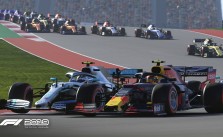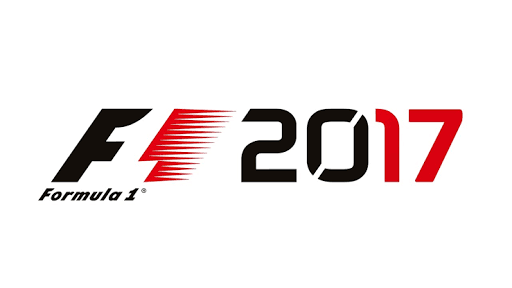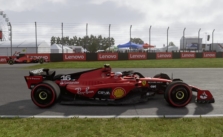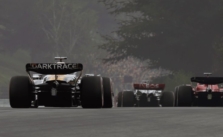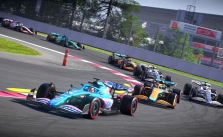F1 23: How to Race without Anti-Lock Brakes (ABS)

Understanding Anti-Lock Braking Systems (ABS) and Their Impact
ABS is designed to prevent the wheels from locking up or skidding during braking. In other words, it allows the driver to maintain steering control while braking. Without ABS, it’s up to the driver to manually manage the braking process to prevent wheel lock-up.
It’s crucial to understand that when you race without ABS, the responsibility of braking falls entirely on you. Therefore, understanding your car’s braking system, how to manipulate it, and the feel of your car under various conditions are paramount.
Brake Bias
Brake bias is an adjustment of the braking force between the front and rear wheels. This is an important concept in braking without ABS. Understanding and adjusting the brake bias allows you to maximize the braking force your car can exert without locking the wheels.
Non-ABS Braking Techniques
Threshold Braking
Without ABS, a driver must manually control their braking to avoid locking their wheels. This involves a technique known as ‘threshold braking’, which is the act of braking right at the limit of locking the wheels. Essentially, the driver needs to apply the brake pedal with enough force to slow the car as quickly as possible without triggering a wheel lock-up.
To master threshold braking, it’s necessary to become attuned to the feedback from the vehicle, especially through the brake pedal and steering wheel. Start by applying firm pressure on the brake pedal. As the car slows and downforce decreases, you should gradually reduce the pressure you’re applying to the pedal to avoid locking the wheels.
Trail Braking
Trail braking is another valuable technique. It involves continuing to brake as you enter a corner, progressively releasing the brake as you turn into the corner. This helps to shift the car’s weight onto the front wheels, increasing their grip and allowing a tighter turn.
However, trail braking requires a lot of finesse and a good understanding of weight transfer dynamics. Done improperly, it can easily lead to a spin.
Cadence Braking
Cadence braking is a technique used to mimic the function of ABS manually. It involves rapidly pumping the brakes to modulate the pressure, avoiding wheel lock-up. However, due to the extreme speeds and quick reactions needed in F1, cadence braking is often less useful than threshold and trail braking.
Understanding Tire Management
Tire grip is your best friend when it comes to braking without ABS. Understanding how your tires react under different conditions is vital. For example, cold tires have less grip, which makes threshold braking harder.
Remember, your tires have a limit to the grip they can offer. When racing without ABS, the balance between your need for speed and the need to conserve tire grip becomes a crucial aspect.
Weight Transfer
Under braking, weight shifts to the front of the car, increasing the grip available to the front tires and decreasing it at the rear. This weight transfer is a powerful tool. You can use it to improve your car’s turn-in, but mismanagement can cause oversteer or understeer.
The key here is smoothness. Any abrupt inputs can unsettle the car. When approaching a corner, brake smoothly and then ease off the brakes as you turn in.
Learning the Track
When you race without ABS, each track becomes a unique puzzle to solve. Understanding each track’s braking points, lines, and how to approach each corner is crucial. Practice, analyze your performance, learn from your mistakes, and continue to improve.
Tips for Non-ABS Racing in F1 23
-
Practice Makes Perfect
Braking without ABS in F1 23 is as much an art as it is a science. Every track, corner, and car can feel different. Only through consistent practice can you understand the unique braking points, how much pressure to apply, and when to ease off the brakes.
-
Use Your Senses
Listen for the sound of your tires. If they squeal, you are likely near the limit of grip. Feel the car’s response through the steering wheel. If it becomes light or unresponsive, you may be close to locking up the wheels.
-
Experiment with Brake Bias
As mentioned earlier, adjusting the brake bias can help optimize your braking. A forward bias may increase stability but cause understeer, while a rearward bias may increase turning response but induce oversteer. Find the balance that suits your driving style and the demands of the track.
-
Stay Calm
Braking without ABS can be nerve-wracking, especially when you’re hurtling towards a corner at high speed. Remember to stay calm and focused. Overreacting can lead to errors, so trust in your abilities and the techniques you’ve learned.
In conclusion, while racing without ABS in F1 23 presents a significant challenge, with the right understanding of the principles involved and dedicated practice, you will see improvements in your racing performance.




